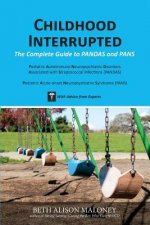
Kód: 12738523
The extent of farm credit in the Libyan agricultural sector
Autor Abdeljalil Ahmed
Rural households in Libya are credit constrained, in terms of access and the amount of credit received. Formal banks are the main players in credit market. Despite 44 branches of agricultural banks distributed countrywide, these ... celý popis
- Jazyk:
 Angličtina
Angličtina - Väzba: Brožovaná
- Počet strán: 160
Nakladateľ: Cuvillier Verlag, 2010
- Viac informácií o knihe

Mohlo by sa vám tiež páčiť
-

Death by Video Game: Tales of Obsession from the Virtual Frontline
14.02 € -

A Kayak Full of Ghosts: Eskimo Folk Tales
16.48 € -5 % -

Mismatch
26 € -

Writing with Grace: A Journey Beyond Down Syndrome
23.95 € -1 % -

Toby Seizes The Day
20.37 € -

Childhood Interrupted
29.59 € -

Rise of the Rain Queen
18.12 € -1 %
Darujte túto knihu ešte dnes
- Objednajte knihu a vyberte Zaslať ako darček.
- Obratom obdržíte darovací poukaz na knihu, ktorý môžete ihneď odovzdať obdarovanému.
- Knihu zašleme na adresu obdarovaného, o nič sa nestaráte.
Viac informácií o knihe The extent of farm credit in the Libyan agricultural sector
Nákupom získate 68 bodov
 Anotácia knihy
Anotácia knihy
Rural households in Libya are credit constrained, in terms of access and the amount of credit received. Formal banks are the main players in credit market. Despite 44 branches of agricultural banks distributed countrywide, these branches offer a limited number of credit for different purposes every year. The shares of these branches in rural credit market are quite small: agricultural banks provide only 24 % of loans and the other banks, mainly the commercial banks, provide 76 % of loans. However, agricultural credits provided by agricultural banks offer the most favorable terms for those households that have a positive demand on agricultural credit. Households that have no access to agricultural credits on the other hand face the problem of paying a higher interest rate when applying for credit from non-agricultural banks. This study is an investigation on `the importance of large credits in Libyan rural-areas, and the main players in the rural-credit marketż. This study determines factors affecting access and credit applications in three different locations. In addition, the affect of households, land, and socio-economic characteristics are analyzed using econometric analysis based on primary data collected during field research in the years 2006 and 2007. Empirical results from the data collected from three different regions in Libya confirm that more than half of rural households have no access to credit and around 42% of rural households do not want to participate in loan borrowing or take loans from any financial institutions that charge high interest rate. This is mostly due to religious considerations that prohibit `unethicalż interest rates charged by banks. The results clearly indicate that more than 51.85% of the loans taken by households are used to build houses, 33.3% of the loans are used in production inputs, and 9.8% of loans are used for family needs and the remaining 4.9% of loans are used for social events respectively. Research findings indicate that `socio-economic characteristicsż of heads of households are important factors increasing the probability of access to credit. Households headed by married men have a higher probability of access to credit compared to households headed by females or bachelors and unmarried women. Heads of households with some years in schooling and a permanent monthly income from off-farm activity have a higher probability of access to credits than other heads who have less education or have no permanent income. Different forms of credit constraints are discussed and comparisons between selected samples are drawn in order to classify constrained and unconstrained households.
 Parametre knihy
Parametre knihy
27.54 €
- Celý názov: The extent of farm credit in the Libyan agricultural sector
- Autor: Abdeljalil Ahmed
- Jazyk:
 Angličtina
Angličtina - Väzba: Brožovaná
- Počet strán: 160
- EAN: 9783869554228
- ISBN: 3869554223
- ID: 12738523
- Nakladateľ: Cuvillier Verlag
- Hmotnosť: 216 g
- Rozmery: 210 × 148 × 8 mm
- Dátum vydania: 27. July 2010
Obľúbené z iného súdka
-

Dune
13.10 € -

Haunting Adeline
30.81 € -

Berserk Deluxe Volume 2
52.63 € -

White Nights
3.57 € -24 % -

Powerless
12.48 € -4 % -

Atomic Habits
15.97 € -15 % -

Dune Messiah
9 € -20 % -

Berserk Deluxe Volume 3
52.83 € -

One Day
12.59 € -13 % -

Berserk Deluxe Volume 1
44.43 € -13 % -

Iron Flame
16.27 € -19 % -

Surrounded by Idiots
10.13 € -16 % -

Harry Potter and the Prisoner of Azkaban (Minalima Edition)
27.84 € -32 % -

Gravity Falls Journal 3
22.01 € -

Heaven Official's Blessing: Tian Guan Ci Fu (Novel) Vol. 1
22.01 € -

The Creative Act
24.06 € -

Dune
9.72 € -19 % -

Hunting Adeline
31.84 € -

A Little Life
17.50 € -

Children of Dune
8.80 € -22 % -

Heaven Official's Blessing: Tian Guan Ci Fu (Novel) Vol. 2
25.28 € -

Bungo Stray Dogs, Vol. 8 (light novel)
16.07 € -1 % -

Percy Jackson and the Olympians 5 Book Paperback Boxed Set
47.81 € -

Solo Leveling, Vol. 1
21.50 € -

The Prisoner's Throne
10.64 € -21 % -

Court of Thorns and Roses
10.13 € -22 % -

Cry Baby Coloring Book
10.85 € -4 % -

Fourth Wing
16.68 € -16 % -

Icebreaker
9.41 € -16 % -

Berserk Deluxe Volume 6
47.81 € -6 % -

Avatar, the Last Airbender: The Kyoshi Novels (Box Set)
27.54 € -33 % -

The 48 Laws of Power
26.92 € -1 % -

House of Leaves
23.24 € -4 % -

Twisted Lies
9.72 € -19 % -

Dune Messiah
12.69 € -12 % -

No Longer Human
16.99 € -

48 Laws Of Power
22.62 € -5 % -

Twisted Games
9.41 € -22 % -

Caraval Paperback Boxed Set
39.83 € -8 % -

Solo Leveling, Vol. 2
22.42 € -

Open Circuits
34.40 € -16 % -

Berserk Deluxe Volume 5
51.30 € -

Heaven Official's Blessing: Tian Guan Ci Fu (Novel) Vol. 3
17.19 € -19 % -

Berserk Deluxe Volume 4
46.59 € -9 % -

Court of Mist and Fury
9.31 € -20 % -

SOLO LEVELING V08
22.42 € -

English File Upper Intermediate Multipack A (4th)
22.21 € -

CHAINSAW MAN V14
11.25 € -14 % -

Before the Coffee Gets Cold
10.44 € -20 %
Osobný odber Bratislava a 2642 dalších
Copyright ©2008-24 najlacnejsie-knihy.sk Všetky práva vyhradenéSúkromieCookies



 21 miliónov titulov
21 miliónov titulov Vrátenie do mesiaca
Vrátenie do mesiaca 02/210 210 99 (8-15.30h)
02/210 210 99 (8-15.30h)